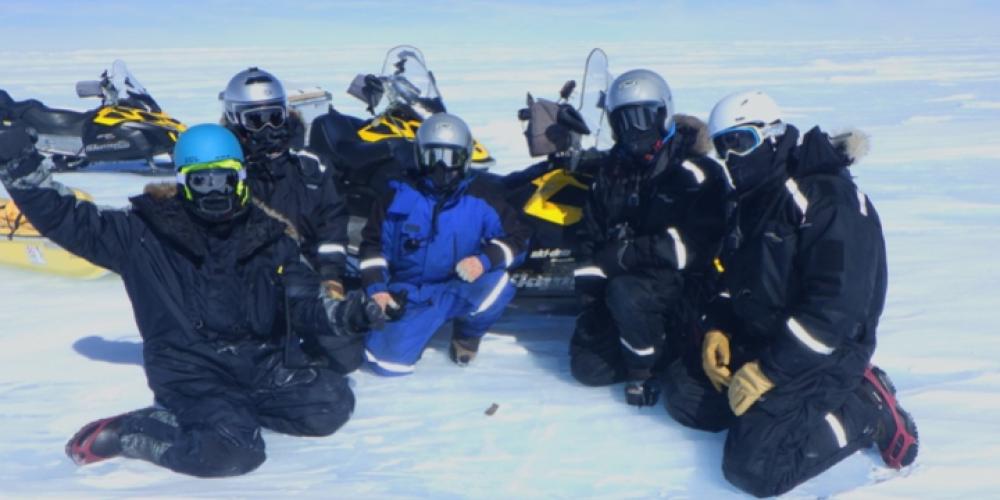
Following successful recovery missions in 2009-2010, 2010-2011, 2012-2013, and 2018-2019, an international team of Belgian, Turkish and Japanese scientists has recovered 66 meteorites in the 2019-2020 season, totaling more than 8 kg, in the Nansen blue ice fields, south of the Princess Elisabeth Station of the eastern Sør Rondane Mountains region, Antarctica. Several thousand micrometeorites, cosmic dust particles less than 2 mm in diameter, were also recovered from the mountain tops near the station. This research has been made possible through funding by the Belgian Science Policy (BELSPO) and logistic support of the International Polar Foundation (IPF).
The meteorite search team, consisting of 2 scientists connected to Belgian universities, Prof. Dr. Steven Goderis from the Vrije Universiteit Brussel and Dr. Hamed Pourkhorsandi from the Université Libre de Bruxelles, Japanese participant Ass. Prof. Naoki Shirai, Turkish scientist Ass. Prof. Mehmet Yesiltas (as part of the 4th Turkish Antarctic Expedition), and two field guides, was dropped off on the Nansen ice field plateau on January 15th until pickup on February 6th. Meteorites can be found on blue ice fields when buried mountain chains are pushed up and ice is eroded by strong katabatic winds. Systematic recovery programs have been running since the 1970s, as each meteorite holds information on the formation and evolution of the solar system and their parent bodies, including Earth, the Moon and Mars, the arrival of water, volatiles, and organic matter to Earth, planetary collision in the geological past, etc.
The conditions were harsh, even for Antarctic summer. Temperatures on the plateau varied between -40 and -45˚C wind chill. The convoy dropping off and picking up the team consisted of two snow trucks, one opening the road riddled by large and dangerous crevasses, the other pulling sledges carrying gear, fuel, skidoos, and accommodation containers. A V-shaped formation was maintained during the meteorite searches with typically 15-50 m of distance between skidoos, snow scooters, depending on daily visibility.
Better than shear number, were the types of meteorites found. Among these, at least two achondrites (stony meteorite representing the Earth’s mantle), and several carbonaceous chondrites, the most primitive meteorites similar in composition to the original material of the Solar nebula, are present. “Each new (micro)meteorite provides an essential piece of the puzzle we are trying to solve”, says Goderis. “Sometimes we learn about enormous planetary collisions taking place in the early solar system, the next time we find prebiotic molecules necessary for the evolution of life.” First, the meteorites will be sent to the National Institute of Polar Research in Tokyo for detailed classification, after which half will come back to the Royal Belgian Institute of Natural Sciences in Belgium where they will be available for research by VUB and ULB teams as well as the international scientific community and the most beautiful pieces will be exposed to the public.
Steven Goderis, Princess Elisabeth Station, East Antarctica.